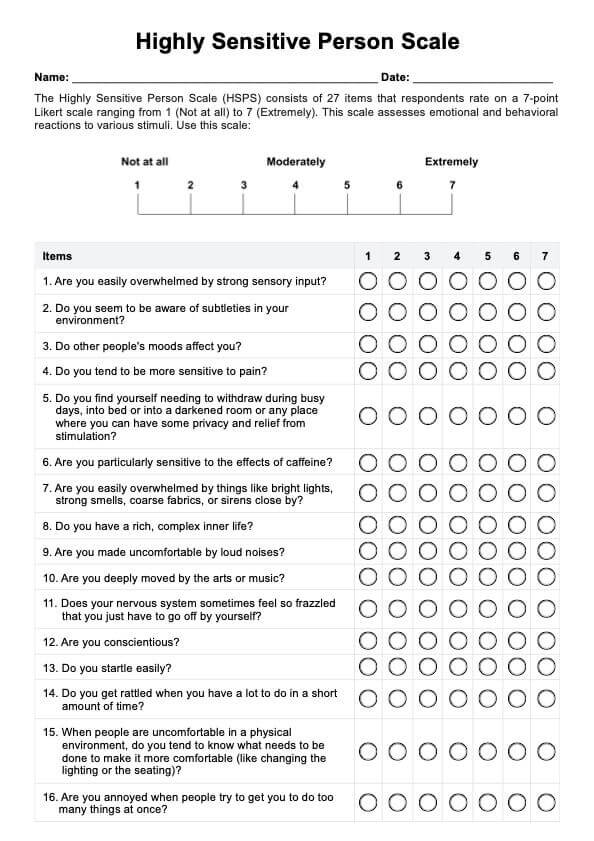The Highly Sensitive Person (HSP) Scale is a self-report assessment that measures an individual's sensitivity to environmental and emotional stimuli, such as upsetting or overwhelming situations.

Highly Sensitive Person Scale
Understand the Highly Sensitive Person Scale (HSPS), a tool for assessing sensitivity to stimuli. Learn how to administer, score, and interpret the results.
Use Template
Highly Sensitive Person Scale Template
Commonly asked questions
While HSPs exhibit heightened sensitivity, they are not necessarily classified as neurodivergent. However, their traits can overlap with some neurodivergent characteristics.
No, a highly sensitive person (HSP) is not the same as someone with borderline personality disorder (BPD). HSP refers to heightened sensitivity, while BPD is a complex mental health condition.
EHR and practice management software
Get started for free
*No credit card required
Free
$0/usd
Unlimited clients
Telehealth
1GB of storage
Client portal text
Automated billing and online payments











